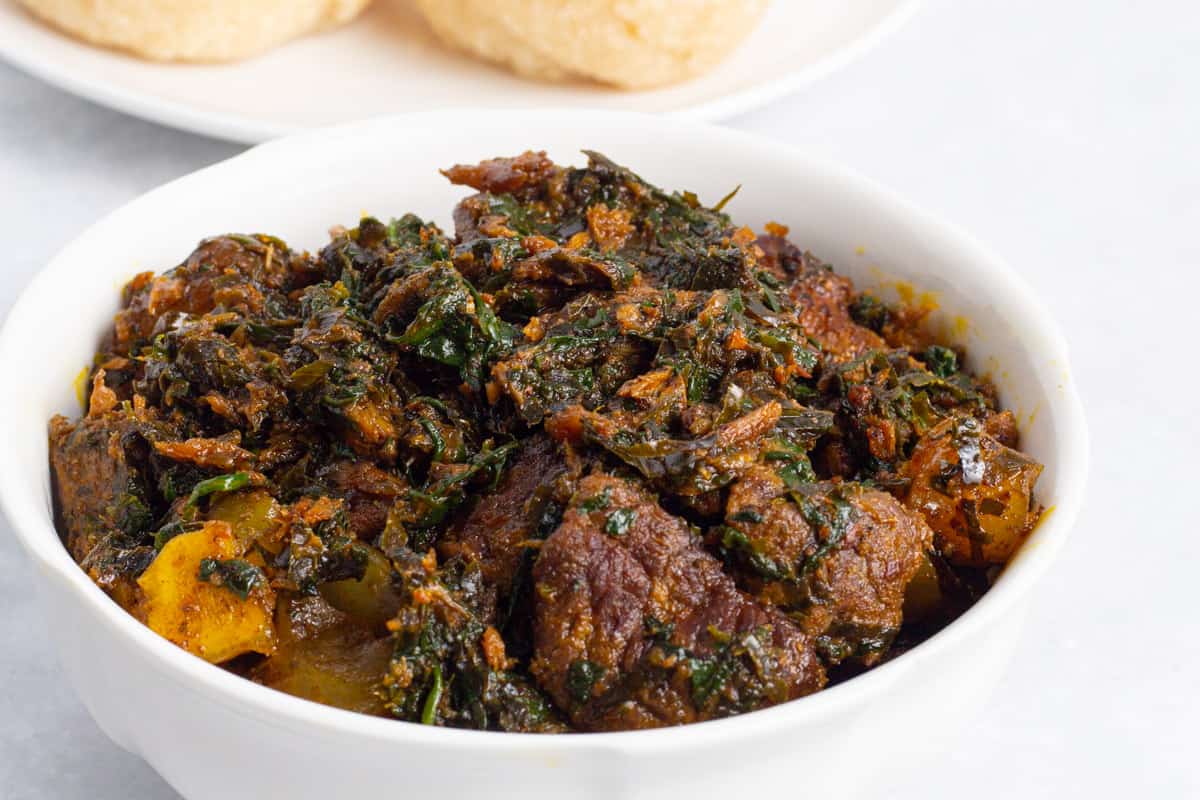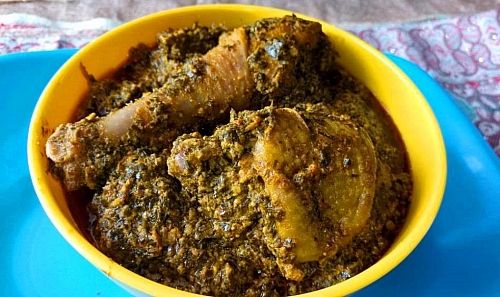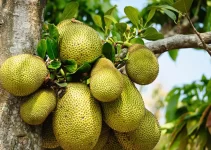Afang soup stands as a culinary gem within Nigerian cuisine, cherished for its rich flavors, vibrant colors, and cultural significance. Rooted in the culinary traditions of the Efik and Ibibio people of Nigeria’s Cross River and Akwa Ibom states, Afang soup has transcended regional boundaries to become a beloved dish enjoyed by people across Nigeria and beyond. In this article, we delve into the origins, ingredients, preparation, and cultural significance of Afang soup.

Origins and Cultural Significance:
Afang soup traces its origins to the Efik and Ibibio communities of southeastern Nigeria, where it holds a central place in traditional celebrations, ceremonies, and gatherings. Historically, Afang leaves (Gnetum africanum) and waterleaf (Talinum triangulare) served as the primary ingredients, harvested from the lush forests of the region. Over time, Afang soup has evolved, incorporating additional ingredients and variations to suit different tastes and preferences.
Ingredients and Preparation:
The hallmark of Afang soup lies in its combination of flavorful ingredients and meticulous preparation. While variations exist, the traditional recipe typically includes the following ingredients:
- Afang Leaves: Also known as Okazi leaves, Afang leaves impart a distinct earthy flavor and aroma to the soup. These dark green, nutrient-rich leaves are finely shredded or pounded before being added to the pot.
- Waterleaf: Waterleaf, with its tender texture and mild flavor, serves as a complementary ingredient to the robust taste of Afang leaves. It adds moisture and volume to the soup, enhancing its consistency and mouthfeel.
- Protein: Various protein sources, such as meat, fish, or seafood, are commonly used in Afang soup. Popular choices include beef, goat meat, dried fish, stockfish, or crayfish, each contributing its unique flavor and texture to the dish.
- Palm Oil: Palm oil, a staple ingredient in Nigerian cuisine, imparts richness, color, and depth of flavor to Afang soup. It is often heated and combined with other ingredients to form the base of the soup.
- Seasonings and Spices: A blend of aromatic spices and seasonings, including onions, crayfish, garlic, and chili peppers, elevates the flavor profile of Afang soup, adding complexity and depth.
To prepare Afang soup, the Afang leaves and waterleaf are washed, shredded, and set aside. Meanwhile, the protein of choice is cooked until tender, and palm oil is heated in a separate pot. The seasonings and spices are added to the palm oil, followed by the shredded leaves and cooked protein. The soup simmers gently until all the flavors meld together, resulting in a hearty and flavorful dish.

Culinary Experience and Enjoyment:
Afang soup is celebrated not only for its delectable taste but also for its role in fostering communal bonds and cultural identity. It is often enjoyed with a side of fufu (a starchy accompaniment made from cassava, yam, or plantain) or rice, creating a satisfying and nourishing meal for family gatherings, celebrations, or everyday dining.
In essence, Afang soup encapsulates the essence of Nigerian culinary heritage, blending tradition, flavor, and community into a single pot. Its rich history, diverse ingredients, and vibrant flavors make it a cherished dish that continues to captivate the palates of food enthusiasts around the world. Whether enjoyed in the heart of Nigeria or savored in distant lands. Afang soup serves as a delicious reminder of the rich tapestry of Nigerian cuisine and culture.
Afang Soup Review: Exploring the Flavors and Traditions of Nigerian Cuisine
Nestled within the vibrant tapestry of Nigerian culinary tradition lies Afang soup, a dish celebrated for its rich flavors, cultural significance, and communal appeal. As a cornerstone of Nigerian cuisine. Afang soup has captivated the palates of food enthusiasts both within Nigeria and across the globe. In this review, we embark on a culinary journey to explore the essence of Afang soup, from its origins to its taste and texture.

Origins and Cultural Significance:
Afang soup traces its roots to the Efik and Ibibio communities gengtoto of southeastern Nigeria, where it holds a revered place in traditional cuisine and cultural celebrations. Historically, Afang leaves and waterleaf served as the primary ingredients, harvested from the lush forests of the region. Today, Afang soup continues to embody the culinary heritage and communal spirit of Nigerian culture.
Taste and Texture:
The hallmark of Afang soup lies in its harmonious blend of flavors and textures. Resulting in a dish that is both comforting and deeply satisfying. The combination of Afang leaves and waterleaf lends the soup a unique earthy aroma and a hearty, leafy flavor. The tender pieces of meat or fish add richness and depth. While the aromatic spices and seasonings infuse the dish with complexity and warmth. The velvety consistency of the soup, enriched by the palm oil base, envelops the palate in a symphony of flavors with each spoonful.
Preparation and Presentation:
Afang soup is meticulously prepared, with each ingredient carefully selected and skillfully combined to achieve the perfect balance of flavors. The process begins with washing and shredding the Afang leaves and waterleaf. Followed by cooking the protein of choice until tender. The palm oil is then heated and infused with a medley of spices and seasonings before being combined with the shredded leaves and cooked protein. The soup simmers gently, allowing the flavors to meld together, resulting in a fragrant and visually stunning dish.
Culinary Experience:
Savoring a bowl of Afang soup is more than just a culinary experience. It is a journey through the cultural landscape of Nigeria. Whether enjoyed in the company of loved ones during festive occasions or savored as a comforting meal on a quiet evening. Afang soup brings people together and fosters a sense of community and connection. The ritual of sharing a meal of Afang soup transcends borders and boundaries. Uniting individuals in a celebration of food, culture, and tradition.
Conclusion:
In conclusion, Afang soup stands as a testament to the rich culinary heritage of Nigeria. Offering a tantalizing blend of flavors, textures, and traditions. Its origins rooted in the cultural tapestry of southeastern Nigeria. Afang soup continues to captivate the senses and ignite the imagination of food enthusiasts around the world. Whether enjoyed for its comforting warmth, its vibrant flavors, or its cultural significance. Afang soup remains a cherished symbol of Nigerian cuisine and community.
Read More Article About “James Anderson’s Final Spell: Celebrating a Cricket Legend“



